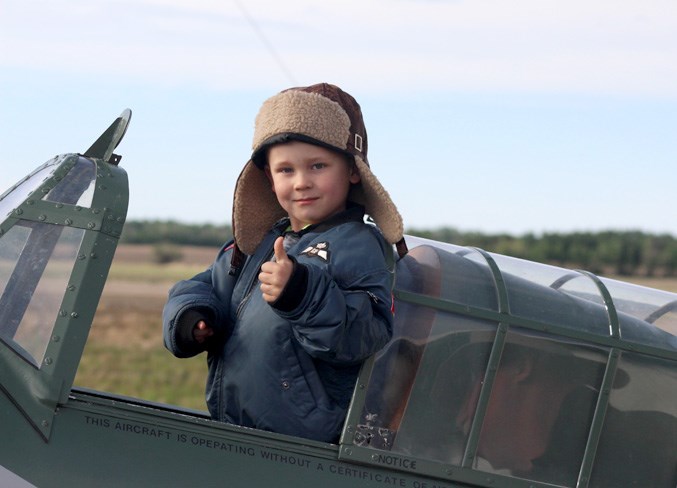A mechanical problem prevented Barrhead native Norman Ronaasen from flying the famed Avro Arrow.
On Feb. 20, 1959, Ronaasen, a test pilot selected by the Canadian Armed Forces, was scheduled to take his first flight in the Avro Arrow, however, after completing a pre-flight check and a series of taxi trials requested that the tires be replaced.
While the aircraft was back in the hanger waiting for the work to be done the Canadian government led by Prime Minister John Diefenbaker announced that they had cancelled the program.
That is what Town of Barrhead mayor Dave McKenzie told an audience of about 400 people during the Barrhead Flying Club’s annual Fly-in breakfast May 27 at the Johnston Airport during the event’s opening ceremony in which he gave an overview of the British Commonwealth Air Training Plan the theme of the fly-in and the area’s aviation history.
Many call the combat jet one of the most advanced to be built in Canada, with aerodynamics and technologies considered years ahead of the time.
Designed by A.V. Roe Canada in Malton, Ont., the Avro Arrow was built to intercept Soviet bombers that might have entered North American airspace during the Cold War. Two months later, the assembly line, tooling, plans and existing airframes and engines were ordered destroyed.
Only a few of the jets were constructed, however, before a controversial federal government decision killed the program in February 1959. The cancellation resulted in an immediate layoff of 15,000 and another 30,000 in the days that followed from suppliers and contractors.
Flying Club president Wade Evans said the mayor was instrumental in helping plan the event.
“About a month ago the mayor asked us how he could help try to expand the event beyond our usual breakfast,” he said, adding in large part due to McKenzie’s efforts the club set a new record attendance record of 375. “That is just the number of breakfasts we served when you include all the others who came just to look at the planes and take part in the activities I am sure there was a lot more.”
Evans said without the mayor’s help the club wouldn’t have secured a mobile display from the Alberta Aviation Museum, which included a 5/8 working replica of the Hawker Hurricane, a single seat fighter from the Second World War, that was produced in Canada and flown by members of the Royal Air Force and later the Royal Canadian Air Force.
In addition to the display, the museum also arranged for Rosella Bjornson, the first female pilot for a commercial airline in North America to talk to Barrhead 526 Royal Canadian Air Cadet Squadron cadets.
The cadets were at the fly-in to re-enact a pilot graduation ceremony that would have taken place in more than 200 British Commonwealth Air Training Plan facilities during the Second World War.
The British Commonwealth Air Training Plan was a massive, joint military aircrew-training program created by the United Kingdom, Canada, Australia and New Zealand, during the Second World War. According to the Bomber Command Museum in Nanton, at the plan’s peak 94 schools operated at 231 sites across Canada using 10,840 aircraft graduating 131,553 pilots, navigators, bomb aimers, wireless operators and flight engineers.



